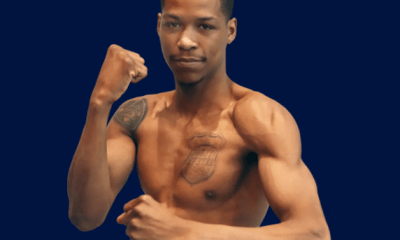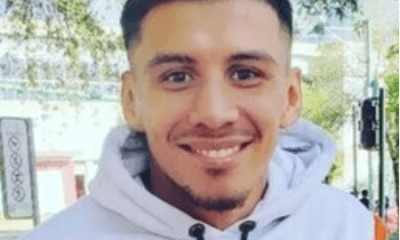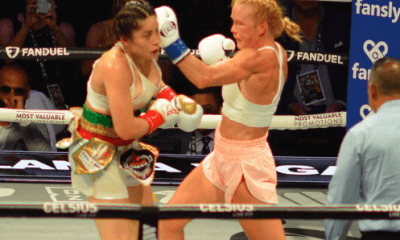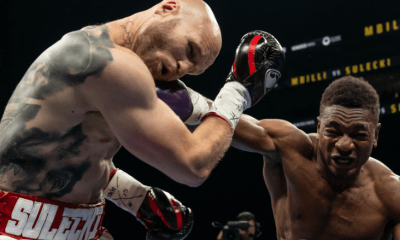Featured Articles
Golovkin’s Fear Realized as Canelo Escapes With a Draw
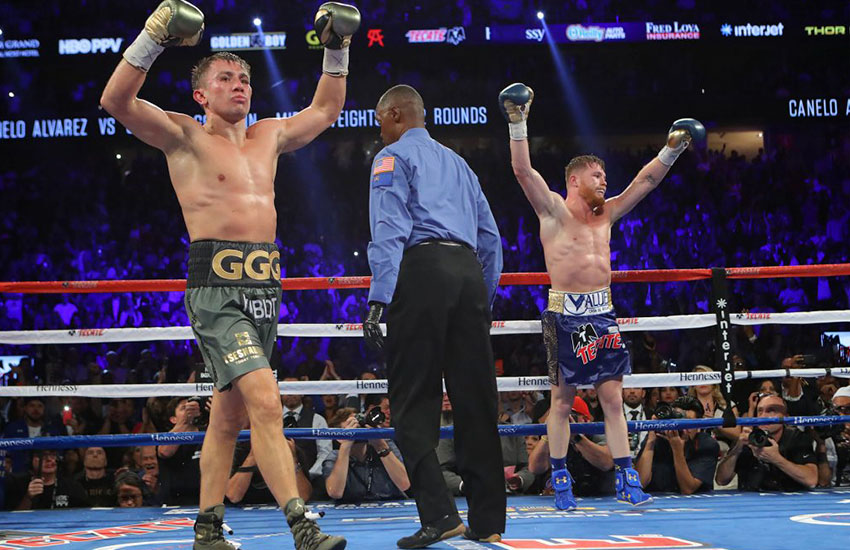
Fight fans waited two years to find out who was the better fighter between Saul “Canelo” Alvarez 49-1-2 (34) and Gennady “GGG” Golovkin 37-0-1 (33) and, at least officially, they’ll have to wait a little longer. This past weekend, with the bragging rights and titles on the line in the middleweight division, Canelo and GGG fought to a disputed draw. The judges submitted scores of 118-110 Canelo, 115-113 Golovkin and 114-114.
I scored the fight 116-112 Golovkin and can live with 115-113 at the worst. However, I don’t see any case for the fight being scored a draw, and for veteran judge Adalaide Byrd to score it inexplicably 118-110 or 10-2 in rounds for Canelo is a complete outrage! It was a highly anticipated and dramatic bout, but unfortunately it will forever be remembered for one of the most atrocious scores submitted by a judge in a big fight in a long time. It’s not the first time this has happened and it won’t be the last and I have no doubt the rematch will do even bigger numbers because of the controversy.
As for the fight….two things stand out. Canelo, 27, fought better on the move than I thought he could, and Golovkin, 35, has eroded more physically than I had thought. He had a hard time pulling the trigger even when Canelo was standing right there flat-footed in front of him. In spite of seeing Golovkin as the clear winner, I was less impressed with his showing than many others. Canelo was more effective moving and countering than I thought he’d be; it’s just that he didn’t do enough of it. He basically just pot-shotted and countered in patches just enough to survive and keep Golovkin from totally seizing the fight. Gennady fought mostly as the aggressor and he was effective but it’s not like he beat Canelo up. I’ve never seen his offense less imaginative.
Time after time he’d manage to get Canelo against the ropes when Canelo was visibly tired and looking for a breather, yet he would stand there without letting his hands go other than with a few pecking left jabs. Then with a few feints he’d try to cut loose with a wide hook to the head or a sneaky right hand, which Canelo sensed, making Golovkin miss. And perhaps the most perplexing thing about GGG’s limited offense was his lack of body punching. Why Abel Sanchez didn’t implore Gennady to go to the body is totally mystifying. Canelo tired as the fight progressed without GGG landing a single notable body punch. Golovkin did so much head hunting that it didn’t take Canelo long to figure that he only needed to cover up and protect his head because there’s nothing coming downstairs. That aided Canelo in leaps and bounds because without the body work he wasn’t worn down as much and without any trace of deception it was easier to defend and predict where Golovkin was going.
It’s no coincidence both Danny Jacobs and Canelo went the distance with Golovkin, because each has a terrific chin and GGG is stymied by fighters who can be effective on the move. Golovkin, as it’s been said here before, is one-dimensional. His inability to shine against fighters who don’t stand in front him cannot be blamed on his age; it’s always been there. The thing that can be blamed on age is his ability to get off during the bout when Canelo was planted there right in front of him. Many times they were in that position with Canelo not doing a single thing to prevent Golovkin from getting off. He wasn’t punching, nor even feigning to, and GGG couldn’t pull the trigger other than to poke him with his jab hoping to create the perfect opening. And when he took too long to get off, Canelo either moved or threw a desperate right hand to the head or body which was nothing more than a throw- away punch meant to give him some space to get off the ropes.
Golovkin’s jab was a better weapon for him than I anticipated it would be — the problem was that’s what his offense was reduced to. Canelo, who never fought the way he did before, regarding his lateral movement, did so because Golovkin was too strong for him to fight and he had to pick his spots to get off. Had I been told before the fight that Canelo could neutralize Golovkin’s offense to just a jab with his movement I would’ve never believed it.
What stands out most about Canelo’s performance is that he didn’t allow GGG to beat him up or really work him over. The downside to that — and why I, like so many others, believe he lost the fight — was that he didn’t come close to beating up Golovkin or making him do anything he didn’t want to. There was one fighter in the ring who was having success offensively, and that was Golovkin jabbing effectively. Canelo had some nice counters and nailed GGG pretty good after a big miss but those occasions were too sporadic for him to bank rounds and Golovkin out-worked him throughout the fight.
I don’t think it was a necessarily a great fight and, quite frankly, I was a little underwhelmed by both fighters. One basically looked to avoid fighting and engaging and the other offered nothing in return but a consistent left jab. The decision isn’t the worst we’ve seen aside from the 118-110 score. There was possibly one swing round (two swing rounds would be stretch as it wasn’t a difficult fight to score), but Golovkin should have had his hand raised when it was over.
Moreover, everyone knew that Canelo was the star and that if the fight went the distance Golovkin would get no favors from the judges in any of the close rounds. Team Canelo agreed to fight Golovkin at the ideal time. Oscar De La Hoya and his brain trust sensed Golovkin had slipped just enough to narrow the gap between the two. They garnered GGG was vulnerable to fighters who just don’t stand there and freeze when they get hit, and Canelo showed more diversity than anyone believed he possessed or had seen from him before. And once again smart management and fighting dangerous opponents at the right time played a major role at boxing’s highest level as to who wins.
It’s safe to say we’ll see Canelo-Golovkin II. I believe with Golovkin getting older and Canelo getting better, the window has closed for Golovkin to ever gain a victory over Canelo. Prior to the bout I said if Golovkin was ever going to beat Canelo it was on September 16th. An overwhelming majority of astute boxing observers believe GGG did beat Canelo, but in the eyes of those who matter it was a dead heat.
Canelo’s great chin, ability to box on the move and having just enough power to prevent GGG from walking through him, enabled him to survive and stem the tide enough to demand a rematch. When they meet again Canelo will be more confident and Golovkin will probably be less than he was this past weekend. If Golovkin couldn’t get the decision this time, it will be that much harder in a rematch. To win he’d have to stop Canelo and I don’t think that’s plausible.
Canelo vs Triple G / Check out more boxing news on video at The Boxing Channel.
Photo credit: Tom Hogan / Golden Boy Promotions
Frank Lotierzo can be contacted at GlovedFist@Gmail.com
-

 Featured Articles3 weeks ago
Featured Articles3 weeks agoAvila Perspective, Chap. 330: Matchroom in New York plus the Latest on Canelo-Crawford
-

 Featured Articles1 week ago
Featured Articles1 week agoVito Mielnicki Jr Whitewashes Kamil Gardzielik Before the Home Folks in Newark
-

 Featured Articles4 weeks ago
Featured Articles4 weeks agoAvila Perspective, Chap 329: Pacquiao is Back, Fabio in England and More
-

 Featured Articles3 weeks ago
Featured Articles3 weeks agoOpetaia and Nakatani Crush Overmatched Foes, Capping Off a Wild Boxing Weekend
-

 Featured Articles2 weeks ago
Featured Articles2 weeks agoCatching Up with Clay Moyle Who Talks About His Massive Collection of Boxing Books
-

 Featured Articles3 weeks ago
Featured Articles3 weeks agoFabio Wardley Comes from Behind to KO Justis Huni
-

 Featured Articles1 week ago
Featured Articles1 week agoMore Medals for Hawaii’s Patricio Family at the USA Boxing Summer Festival
-

 Featured Articles4 weeks ago
Featured Articles4 weeks agoDelving into ‘Hoopla’ with Notes on Books by George Plimpton and Joyce Carol Oates

